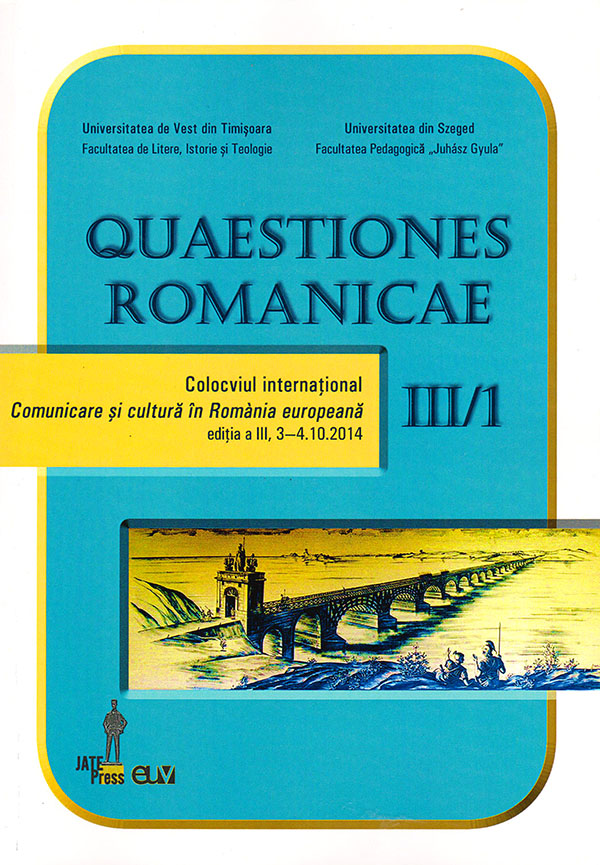Cine, ce şi cum traduce în limba română? Intenţii. Subiecte. Metode (secolele al XVIII-lea şi al XIX-lea)
Abstract: (Who, what and how translated in Romanian? Intentions. Topics. Methods (the 18. and the 19. centuries)) This essay revisit concept of translation as intercultural, interlingual and intertextual encounters in view of cross-border de endonymic line. Different times and different spaces are combined unequal and variously criteria for the selection of source-text; objective and subjective criteria, political or esthetical criteria etc. Although these criteria have been used in the 19 century, the activity of Romanian translators may be put under the sign of the Larbaud’s sentence: “Show me your translated author and I tell you who you are” (1946, 95). We can expand this sentence: Show me how you translate and I tell you who you are. Here we have in two sentences two translating principles used in Romanian 19 century translation. First principle translation is based on the category of source text; the second is based on the conception of translation and on the target public. We are examining these aspects, in order to make the most well considered judgments and to portray the Romanian translators
Keywords: translation, act/status/reason/method/purpose of translation.
Rezumat: Obiectivul acestui studiu este de a revaloriza traducerea, ca răscruce interculturală, interlingvistică şi intertextuală, graţie căreia faptele de cultură şi civilizaţie transgresează cadrul endonim de origine. În diferite spaţii şi epoci, au funcţionat – variat şi inegal – criterii de selectare a textelor care meritau a fi traduse, criterii obiective, subiective, ideologice, estetice etc. Deşi în secolul al XIX-lea cultura română a cunoscut destule, activitatea traducătorilor români este situabilă sub semnul sentinţei-palimpsest: „Spune-mi pe cine traduci, ca să îţi spun cine eşti” (Larbaud 1946, 95). Desigur, putem nuanţa fără teama de a greşi: Spune-mi cum traduci, ca să îţi spun cine eşti. Cele două expresii conţin două principii traductive, majore şi majoritare, după care este efectuată traducerea în română, în perioada cercetată. Primul priveşte domeniul, tipul şi categoria de text de tradus; al doilea creionează concepţia despre traducere, despre modul de a traduce şi, prin acesta, implicit, publicul căruia îi este destinată traducerea. Analizarea celor două aspecte permite portretizarea traducătorilor sau, cel puţin, trasarea profilului acestora şi, mai ales, identificarea finalităţii atribuite traducerii ca rezultat.
Cuvinte-cheie: traducere, act/statut/raţiuni/metode/finalităţi traductiv(e).
